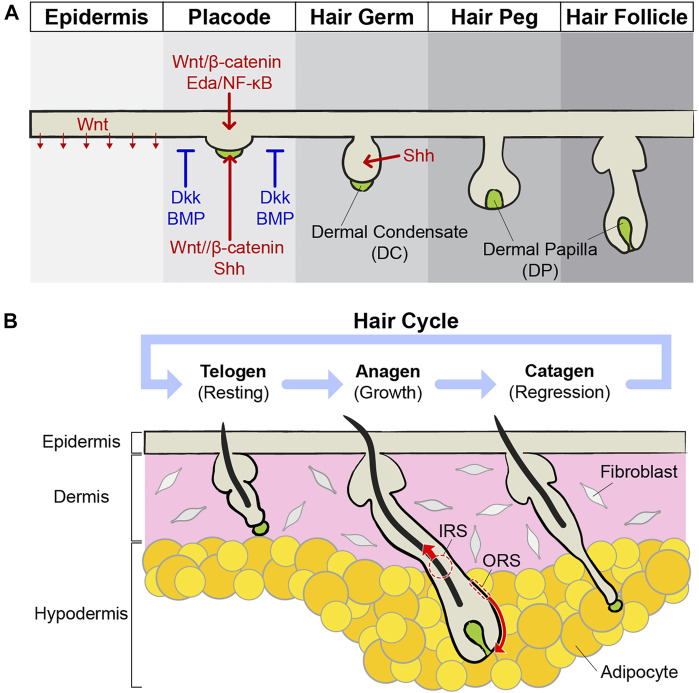FIGURE 1.
Development and cycling of hair follicles. (A) During embryonic development, the skin epithelium differentiates and generates hair follicles. Epithelial cells in the epidermis are thickening to build a placode, and mesenchymal cells in the dermis gather to form a dermal condensate (DC) just below the placode. The placode and DC exchange growth signals, such as Wnt/β-catenin and Shh, with each other and grow downward. Around the placodes, inhibitory signals, such as Dkk and BMP, suppress the expression of the hair follicles, thereby expressing the pattern of hair follicle arrays. Placode continuously develops into hair germ and hair peg structures. DC becomes dermal papilla (DP) right below the hair follicles and acts as niches for HFSCs. Eventually, mature hair follicles are formed prenatally. (B) Mature hair follicles undergo cycles of growth (anagen), regression (catagen), and resting (telogen). During the anagen, stem cells become activated by the surrounding niche components. Activated stem cells grow by repeating division, and their progenies differentiate to produce hair. When the anagen stops, the hair follicles enter the catagen phase. Through apoptosis of the outer root sheath (ORS) and extrusion of the inner root sheath (IRS), hair follicles become short in a few days. During the telogen, stem cells in the hair follicles are maintained in quiescence by inhibitory signals. When telogen is finished, stem cells are activated and the anagen starts again.

